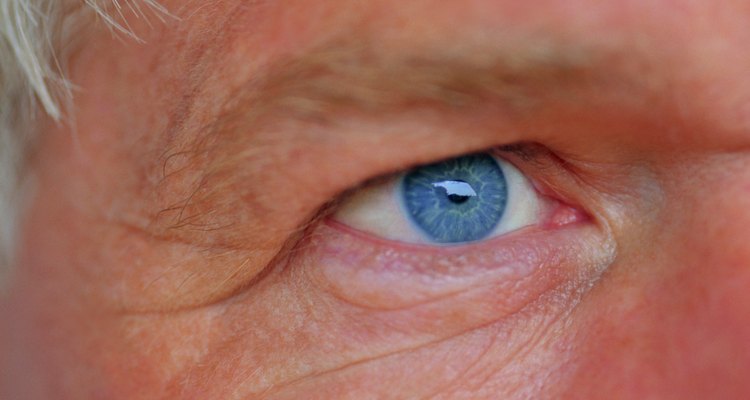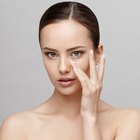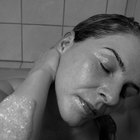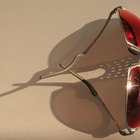
Jupiterimages/Comstock/Getty Images
Everyone is at risk of being stricken by cancer or disease related to sun exposure. However, people with blue and other light-colored eyes are more likely than those with darker eyes to suffer ill effects from the sun's damaging rays due to their lack of protective melanin pigments throughout their bodies. Blue-eyed individuals should wear sunglasses as part of a preventative maintenance routine.
Eye Sores
The human eyelid is a thin skin membrane that cannot shield your eyes from the sun's damaging rays alone. Cancer can occur on eyelids due to sun exposure, and that cancer can spread to the eyes. Sun rays can cause cancer in the iris, the eye's middle region, as well as the retina region just above it. The sun can also cause cancer in the filmy conjunctiva covering of the eyeball just below the lid. Cataracts, a treatable illness with symptoms that include cloudiness of the eyes, can be caused by exposure to ultraviolet, or UV, light, notes The Skin Cancer Foundation. Consult an eye doctor if you have vision concerns that may be related to sun exposure.
Blue Genes
People born with blue or light eyes are naturally predisposed to suffer damage from the sun's UV rays. Without protection, the retinas and the lenses of blue eyes are at particular risk of long-term suffering. People with blue eyes may suffer from eye fatigue and soreness related to sun exposure more often and persistently than people with dark eyes do. The pigment in dark eyes helps to deflect natural and artificial light.
Focal Points
Sandy and snowy locations can increase the risk of sun damage to blue eyes. Deserts and ski resorts are areas where people must take particular care to shield their eyes, as the landscapes refract light to powerful extremes. Conditions like "snow-blindness" can set in within a few short hours, and the affliction can last for as many as two days. Prolonged exposure to sun glare in watery locations can damage sensitive eyes as well.
Seeking Shades
To protect blue eyes from UV rays, wear sunglasses all year long. MayoClinic.com advises wearing sunglasses that provide complete -- 99- to 100-percent -- blockage of both long-wave, or UVA, and short-wave, or UVB, sun rays. To help distinguish protective sunglasses from pretenders of poorer quality, look for labels from the American National Standards Institute, or ANSI, or the International Organization for Standardization, or ISO, to verify their authenticity and potential for saving your sight.
Related Articles

Levels of Polarized Sunglasses

Tanning Beds and Eye Disorders

How Do Tanning Beds Affect Eyes?

Sunbed Pros & Cons

How Do Yellow Lenses in Ski Goggles ...

Beaches Near Greenville, North Carolina

What Color Clothes Makes Brown Eyes ...

How to Spot Fake Serengeti Sunglasses

What Color Shirt to Wear to Make Eyes ...

The Maui Jim Warranty Policy

Eye Contacts With Reflective Effect

What Color Slacks Would Go With a Light ...

How to Cook Blue Eye Cod

Hydroquinone & Dark Circles

How to Access a Securepak Phone Number

How to Correct Gold Tones in Hair Color

Uses for Selsun Blue

Why Do We Need Sunscreen?

The Effects of Red Lens Sunglasses

How to Tell if You Need Yellow or Pink ...
References
Writer Bio
A. Scott Walton began his journalism career in 1985 at the "Nashville Tennessean." His reports have extended to radio, television and the Web and he has written extensively for the "Detroit Free Press," the "Atlanta Journal-Constitution," the "Atlanta Voice" and many other publications. Walton holds a Bachelor of Arts in communications from Vanderbilt University.
Photo Credits
Jupiterimages/Comstock/Getty Images